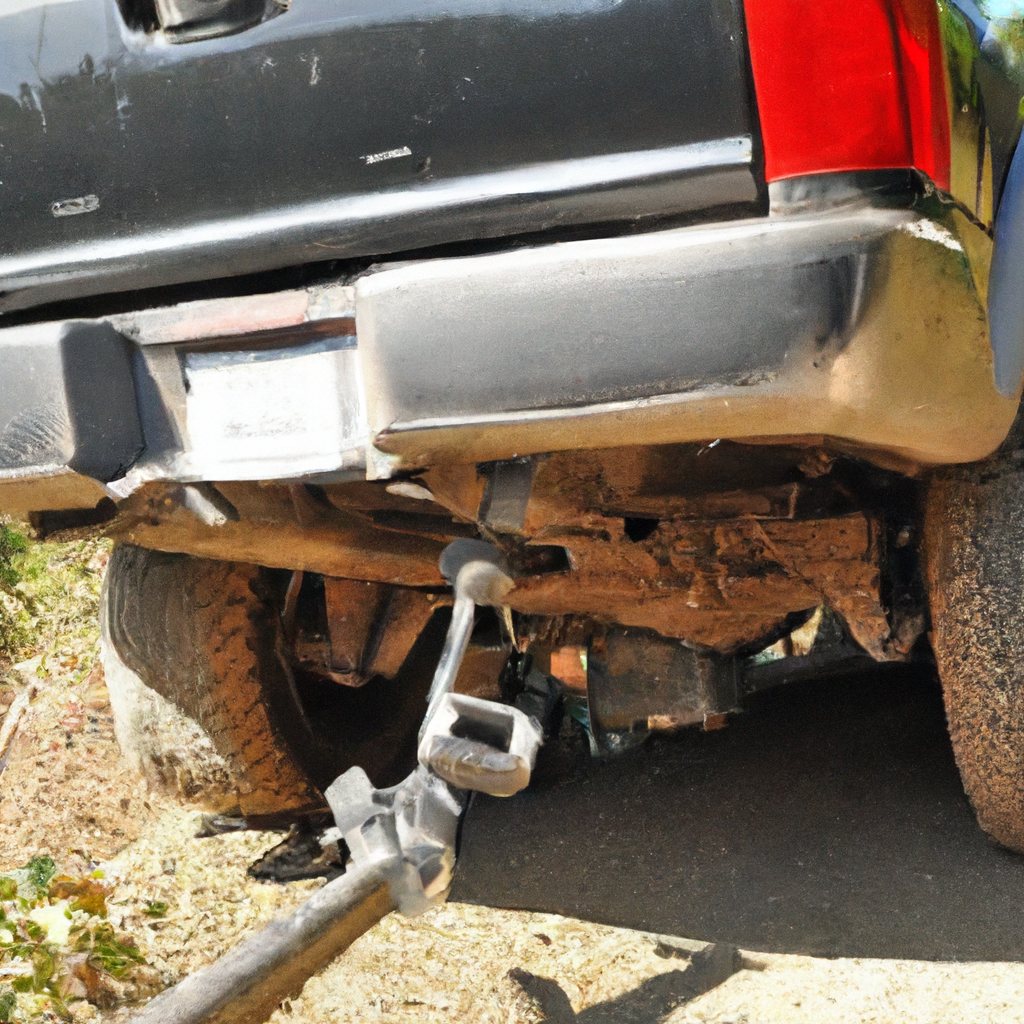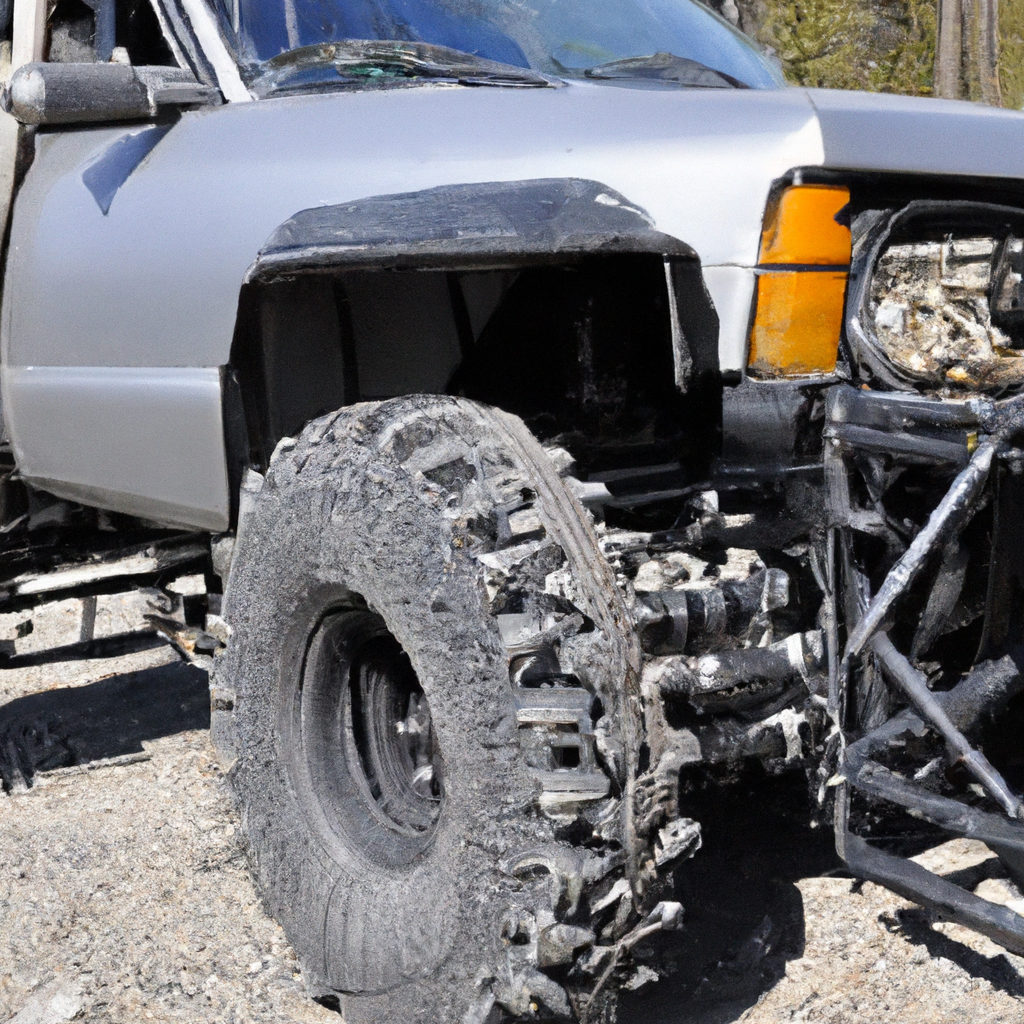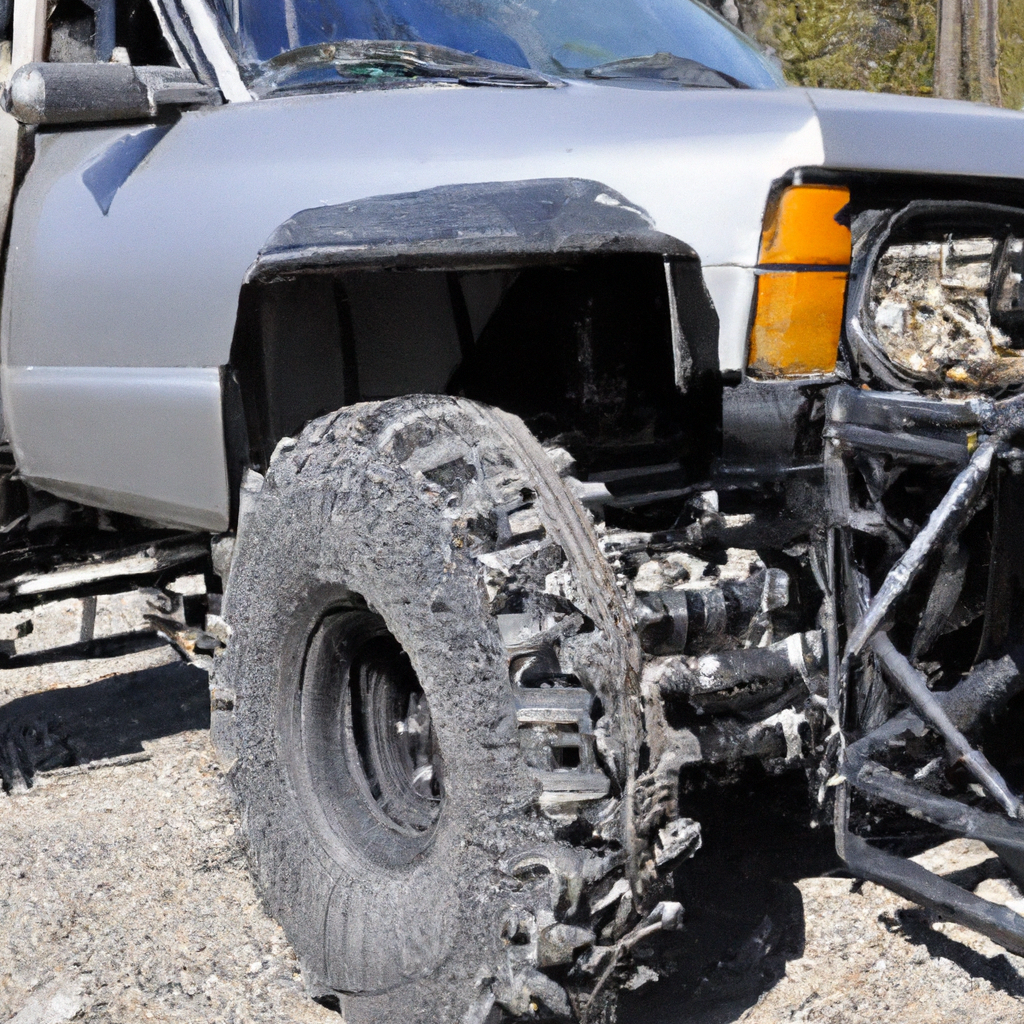When it comes to towing, understanding whether you need to engage 4×4 high or low can make a significant difference in your vehicle’s performance. Whether you need increased traction for rough terrains or more control for heavy loads, choosing the right 4×4 mode can optimize your towing experience. In this article, we will explore the benefits of 4×4 high and low for towing, providing you with the knowledge to make an informed decision and ensure a safe journey.
What is 4×4 and its significance for towing?
Understanding the concept of 4×4
4×4, also known as four-wheel drive or 4WD, is a drivetrain system that allows power to be transmitted to all four wheels of a vehicle simultaneously. This provides improved traction and control, especially in challenging driving conditions such as off-road or slippery surfaces. In the context of towing, 4×4 can play a significant role in enhancing stability and control, particularly when hauling heavy loads or navigating difficult terrains.
The importance of 4×4 for towing
When it comes to towing, having a 4×4 system can be highly advantageous. Towing often involves carrying heavy loads, which can put additional strain on a vehicle’s drivetrain and suspension. 4×4 helps distribute power evenly to all wheels, enabling better weight distribution and reducing the risk of overloading or excessive strain on any particular axle. This improved distribution of power helps maintain stability, especially when towing on uneven or slippery surfaces.
Additionally, 4×4 provides increased traction, allowing the towing vehicle to grip the road more effectively. When towing a heavy load, the added weight can potentially cause the tires to lose traction, especially in adverse weather conditions. The 4×4 system helps mitigate this issue by maximizing tire contact with the road surface, providing better grip and preventing wheel slippage. This enhanced traction contributes to safer towing, minimizing the risk of accidents or loss of control.
Differentiating 4×4 High and 4×4 Low
Explaining 4×4 High
4×4 High, also known as 4H, is a mode in which power is distributed to all four wheels simultaneously, without any additional torque multiplication. It is ideal for situations where increased traction and stability are required, but not necessarily maximum power or torque output. 4H mode is typically used in normal driving conditions, both on and off-road, where additional grip and control are needed.
Explaining 4×4 Low
4×4 Low, also known as 4L, is a low-range mode that provides increased torque multiplication and slower speed to the wheels. This mode is specifically designed for off-road and towing applications where maximum power and torque output are necessary. The lower gear ratio in 4L mode allows for more control and precision in challenging off-road terrains, steep inclines, or when towing heavy loads.
Key differences between 4×4 High and 4×4 Low
The main difference between 4×4 High and 4×4 Low is in their gear ratios and torque multiplication. 4×4 High provides a gear ratio similar to the standard drive mode, enabling a balance between power and traction. On the other hand, 4×4 Low offers a significantly lower gear ratio, providing greater torque multiplication for increased power and control in demanding situations.
Another key difference is the speed at which the vehicle can travel in each mode. 4×4 High allows for higher speeds, making it suitable for normal driving conditions where additional traction is needed. 4×4 Low, on the other hand, restricts the vehicle’s speed due to the lower gear ratio, making it preferable for low-speed applications such as off-roading and towing.

Towing with 4×4 High
Benefits of using 4×4 High for towing
When towing with 4×4 High, there are several benefits that can enhance the towing experience.
-
Improved traction: The increased grip provided by the 4×4 system enables better traction, reducing the risk of wheel slippage and improving overall stability while towing.
-
Enhanced control: 4×4 High mode allows for better control over the towing vehicle, especially in challenging driving conditions. Whether it is a slippery road or an uneven off-road terrain, the additional traction and stability can help maintain control of the vehicle.
-
Versatility: 4×4 High can be utilized in a variety of towing situations, from towing on highways to off-road trails. Its balanced power and traction make it suitable for a wide range of towing applications.
Situations where 4×4 High is recommended for towing
While 4×4 High can be beneficial for towing in various scenarios, there are specific situations where it is particularly recommended:
-
Towing on slippery surfaces: When towing on wet, icy, or muddy roads, 4×4 High can provide the necessary traction and stability to prevent wheel slippage and maintain control.
-
Towing through rough terrains: If you plan to tow through off-road trails or uneven terrains, 4×4 High is recommended to ensure the vehicle has adequate traction and power to handle the challenging conditions.
Towing with 4×4 Low
Benefits of using 4×4 Low for towing
Towing with 4×4 Low can offer several advantages, especially when faced with demanding towing situations:
-
Maximum power and torque: 4×4 Low provides increased torque multiplication, allowing for maximum power output, which can be crucial when towing heavy loads or navigating steep inclines.
-
Precise control in off-road conditions: When towing off-road or through difficult terrains, 4×4 Low offers a lower gear ratio that enhances control and precision, making it easier to navigate obstacles or maintain stability.
-
Enhanced engine braking: The lower gear ratio in 4×4 Low helps with engine braking, reducing the reliance on the vehicle’s brakes and reducing the risk of brake overheating or failure during extended downhill towing.
Situations where 4×4 Low is recommended for towing
While 4×4 Low is not necessary for all towing scenarios, there are specific situations where it is highly recommended:
-
Towing heavy loads: When towing exceptionally heavy loads that require maximum power and torque, 4×4 Low ensures the towing vehicle has the necessary capability to handle the weight effectively.
-
Off-road towing: If you plan to tow off-road, particularly in rugged or challenging terrains, 4×4 Low provides the control and power required to navigate through obstacles and maintain stability.

Determining the most suitable option for towing
Considerations for choosing between 4×4 High and 4×4 Low
When deciding whether to use 4×4 High or 4×4 Low for towing, several factors should be taken into consideration:
-
Towing conditions: Evaluate the driving conditions, including the terrain, road conditions, and the weight of the load being towed. If the conditions involve slippery surfaces, steep inclines, or off-road trails, 4×4 Low may be more appropriate. For normal towing on well-maintained roads, 4×4 High may suffice.
-
Manufacturer’s recommendations: Refer to the vehicle manufacturer’s specifications and recommendations regarding towing with 4×4. The manufacturer’s guidelines will provide valuable insight into the vehicle’s capabilities and the appropriate use of 4×4 modes for towing.
-
Experience and skill level: Consider your own experience and skill level in handling 4×4 systems and towing. If you are not familiar with using 4×4 Low or lack experience in challenging off-road or towing situations, it may be safer to stick with 4×4 High until you gain more proficiency.
Factors affecting the choice of 4×4 mode for towing
The final decision on whether to use 4×4 High or 4×4 Low for towing can be influenced by additional factors, including:
-
Weight distribution: Uneven weight distribution in the towing setup can impact the vehicle’s stability. If the weight is properly balanced and distributed, 4×4 High may be sufficient. However, if the load is heavily concentrated at the rear, causing the front wheels to lose traction, 4×4 Low may be necessary for better control.
-
Towing equipment: The type and quality of towing equipment being used can affect the vehicle’s ability to handle the load. High-quality towing equipment and accessories, such as trailer brakes or weight distribution systems, can improve overall towing performance and stability, potentially reducing the need for 4×4 Low.
-
Vehicle limitations: It is important to be aware of any limitations or restrictions set by the vehicle manufacturer. Some vehicles may have specific guidelines or constraints on the use of 4×4 modes while towing, so it is crucial to adhere to these recommendations for optimal safety and performance.
Tips for safe and efficient towing
To ensure a safe and efficient towing experience, it is important to follow these tips:
Proper weight distribution
Maintain proper weight distribution by loading the trailer properly and ensuring that the load is evenly distributed. Avoid excessive rearward weight, as it can affect the vehicle’s stability and braking performance.
Maintaining appropriate speed
Adhere to safe and legal speed limits while towing. Excessive speed can increase the risk of accidents, especially when towing heavy loads or in challenging driving conditions. It is essential to allow ample time and distance for acceleration, braking, and maneuvering.
Using proper towing equipment
Invest in high-quality towing equipment, including a suitable hitch, trailer brakes, and weight distribution systems, as recommended by the vehicle manufacturer. Properly install and maintain these towing accessories to ensure safe and secure towing.
Common misconceptions about 4×4 towing
Myth: 4×4 High is always better for towing
Contrary to popular belief, 4×4 High is not always the best mode for towing. While it provides enhanced traction and control, there are situations where 4×4 Low may be more suitable, particularly when towing heavy loads or in off-road conditions that demand maximum power and torque.
Myth: 4×4 Low should always be used for towing heavy loads
While 4×4 Low can provide the necessary power and control for towing heavy loads, it is not always a requirement. The choice between 4×4 High and 4×4 Low should be based on various factors, including the specific towing conditions, vehicle capabilities, and manufacturer’s recommendations.
Importance of consulting the vehicle manual
Understanding the manufacturer’s recommendations
The vehicle manual is an essential resource when it comes to towing with 4×4. It provides detailed information on the vehicle’s towing capacities, limitations, and the appropriate use of 4×4 modes for towing. It is crucial to consult the manual and follow the manufacturer’s recommendations to ensure safe and efficient towing.
Locating information about towing with 4×4 in the vehicle manual
To find information about towing with 4×4 in the vehicle manual, refer to the towing section or index. Look for subsections or chapters specifically dedicated to towing or 4×4 operation in relation to towing. Pay attention to details such as recommended gear ratios, speed limitations, and any special instructions or precautions.
Seeking professional advice
Getting guidance from towing experts
If you are unsure about the appropriate use of 4×4 for towing or have specific questions regarding your towing setup or vehicle capabilities, it is advisable to seek guidance from towing experts. These professionals have the knowledge and experience to provide valuable insights and recommendations based on your specific towing needs.
Consulting with vehicle technicians
In addition to towing experts, consulting with qualified vehicle technicians can be beneficial. They can assess your vehicle’s condition, inspect the towing setup, and provide advice on the most suitable use of 4×4 for towing. Vehicle technicians can also address any concerns or mechanical issues that may impact the towing experience.
Conclusion
Understanding the significance of 4×4 for towing is essential for safe and efficient towing operations. The choice between 4×4 High and 4×4 Low depends on various factors, including towing conditions, the weight of the load, and the manufacturer’s recommendations. Consulting the vehicle manual and seeking professional advice can help ensure the proper use of 4×4 for towing, resulting in a more enjoyable and secure towing experience. By following proper towing practices and considering the specific requirements of the towing situation, you can maximize safety and the performance of your vehicle while towing.
